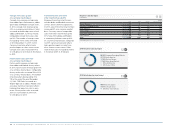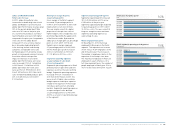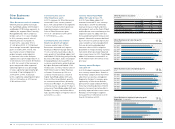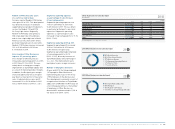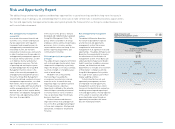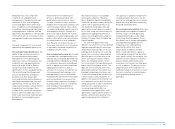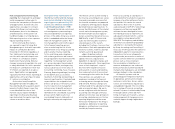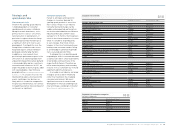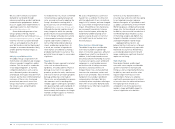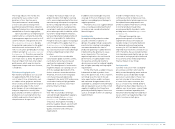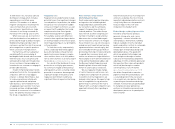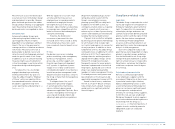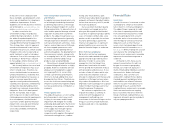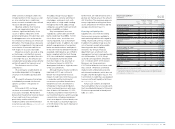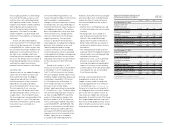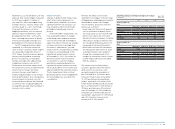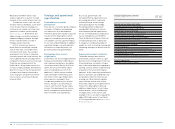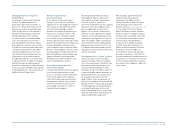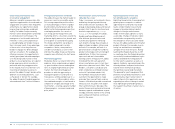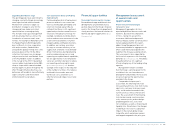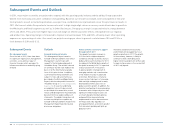Reebok 2010 Annual Report Download - page 168
Download and view the complete annual report
Please find page 168 of the 2010 Reebok annual report below. You can navigate through the pages in the report by either clicking on the pages listed below, or by using the keyword search tool below to find specific information within the annual report.
164 Group Management Report – Financial Review Risk and Opportunity Report
To limit these risks, we utilise a broad
distribution strategy which includes
expanding our controlled space
activities. This enables us to reduce
negative consequences resulting from
sales shortfalls that can occur with
key customers. Specifically, no single
customer of our Group accounted for
more than 10% of Group sales in 2010.
When necessary, we also restrict or
limit the distribution of our products to
protect brand image or product margins.
By differentiating our product offer to
customers, we limit the risk of increased
price competition on specific products
which can result in margin erosion.
Furthermore, with our substantial
marketing efforts we are aiming at
building desirable brands which resonate
with the tastes of our consumers and
ultimately drive high sell-through rates
for our customers, thus providing less
incentive for our customers to engage in
private label initiatives.
In light of improving retailer trends,
we believe the risk of a strong reduction
of business with one of our biggest
retailers is unlikely. Nevertheless, due
to increasing customer activity with
regard to private brand and private
label business, we now believe that on
an aggregate level customer risks have
increased and have a highly probable
likelihood of occurrence on a continuous
basis. The potential financial impact on
the Group is regarded as major.
Regulatory risks
Regulatory risks predominantly include
potential losses from significant changes
to trade policies. In particular, the adidas
Group faces risks arising from sudden
increases of import restrictions, as well
as import tariffs and duties that could
compromise the free flow of goods
within the Group and from suppliers.
For example, several Latin American
countries have significant import duties
on footwear imports from China in place,
which negatively impacts our profitability
in these markets.
To limit these risks, we proactively
utilise a regionally diversified supplier
base which provides some protection
against unforeseen changes in regula-
tions and also allows us to shift produc-
tion to other countries at an early stage if
necessary see Global Operations, p. 106.
As a result of the likelihood of rising
protectionist activity by governments,
we continue to regard further political
and regulatory actions as having a likely
potential of occurrence. An unexpected
significant change in the political and
regulatory environment could have a
significant financial impact on the Group.
Risks from loss of key event or
promotion partnerships
Event and promotion partnerships play
an important role in building brand
image and product authenticity with
our consumers, and this ultimately
supports the generation of sales of
licensed products. The adidas Group
faces the risk of either losing key part-
nerships or having to accept unfavour-
able terms due to intensified competi-
tion for attractive contracts. To mitigate
these inherent risks, we not only seek to
extend our most important partnership
agreements before contract expiry, but
also to broaden the Group’s portfolio of
premium partnerships to help our brands
to expand their consumer reach and
reduce our reliance on single affiliations.
Two examples in 2010 were the extension
of the partnership between adidas and
the Mexican Football Federation and
Reebok’s global alliance with Giorgio
Armani to create special collections.
We also regularly include change-
of-control clauses as well as non-cash
compensation components in contracts
to avoid the risk that negotiations are
reduced solely to price. We expect a high
level of competition for top promotion
partnerships to continue in the near to
medium term as smaller competitors are
expected to intensify their spending in
this area.
Given the maturity of our most important
contracts, we believe the risk of losing
important individual promotion contracts
is only likely. We assess the potential
financial impact of this risk to be
moderate in the medium term.
Product design and development risks
Innovative and attractive products
generate strong sales and – more
importantly – create a halo effect for
other products. Furthermore, fulfilling
highest standards in terms of product
quality and safety is critical to sustainable
commercial success and forms an
integral part of the product design and
development phase. The speed with
which new product technologies and
fresh designs are brought to market
is decisive for maintaining competitive
advantage. In 2010, all brands generated
the majority of their sales with products
which had been brought to market
over the previous 12 to 18 months
see Research and Development, p. 110. If
the adidas Group failed to maintain a
pipeline of new innovative products over
a sustained period of time, we would
risk a significant sales decline. We focus
on pursuing our innovation and design
strength. To ensure we can quickly adapt
to changing consumer preferences,
we focus on streamlining research and
development processes to speed up the
time to market.


